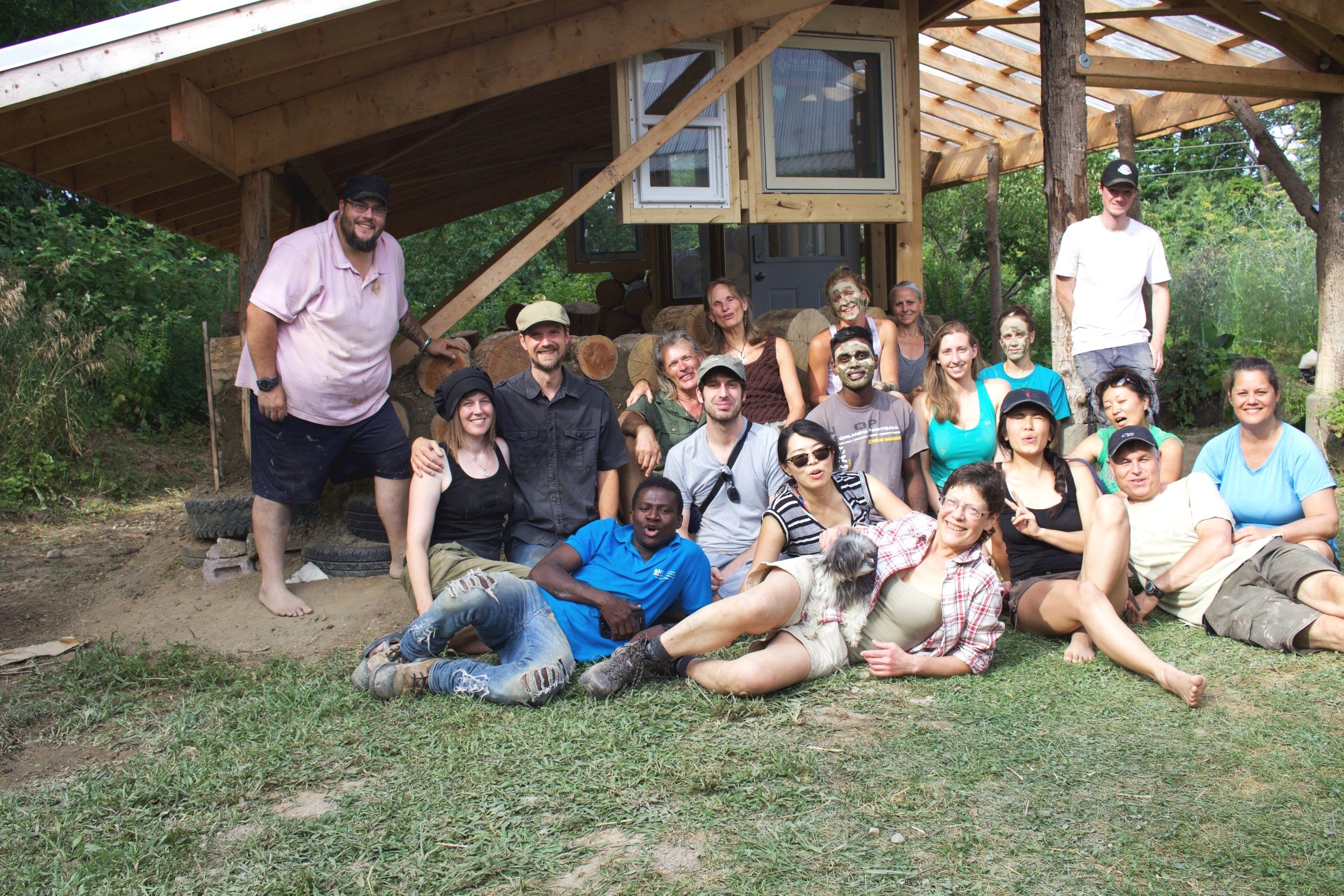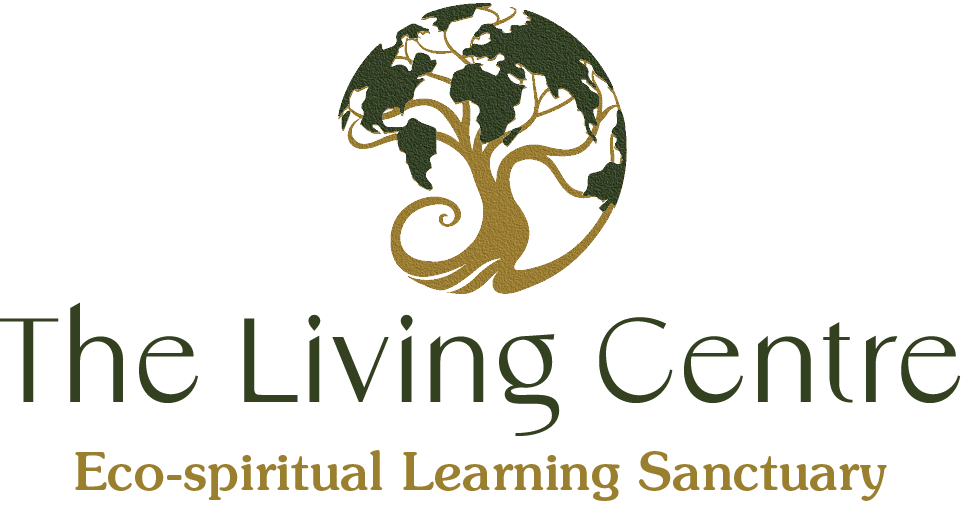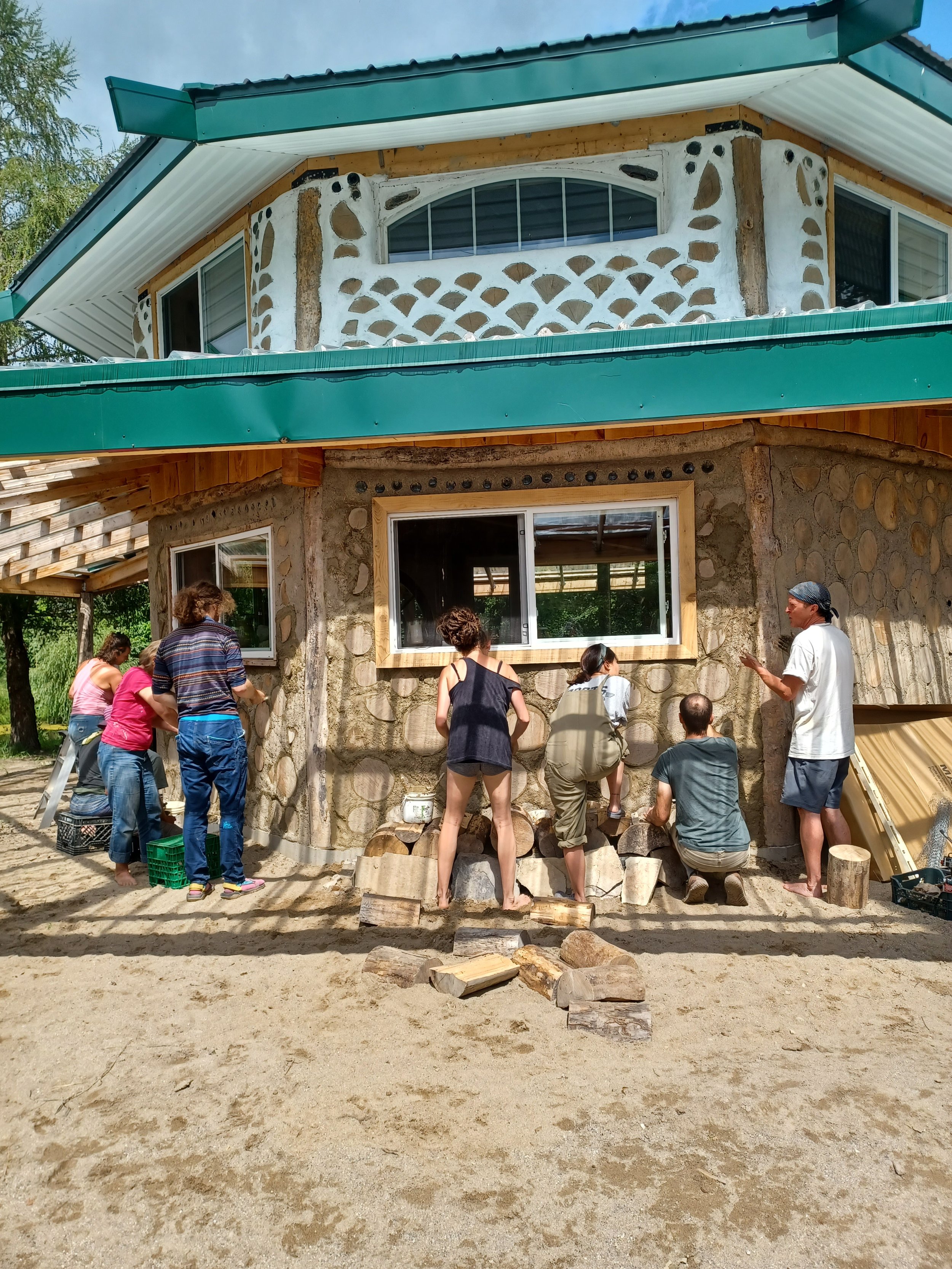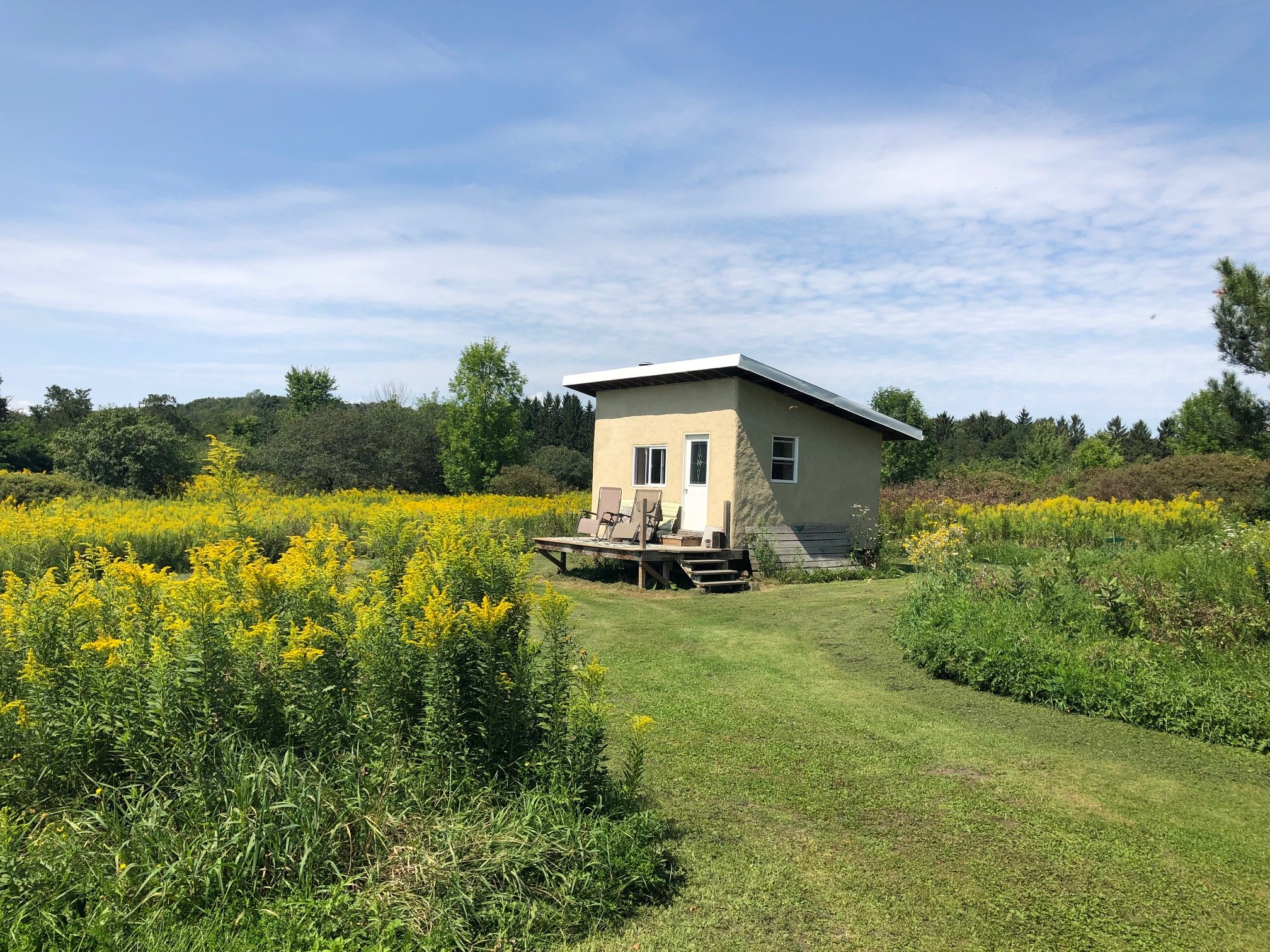Enroll Now
☆
Enroll Now ☆
The Art of Natural Building Workshop
Natural Building is an approach that uses minimally processed materials from nature to build durable buildings that are healthy and have a nurturing feel for those lucky enough to live in them. Rather than making conventional construction techniques incrementally less damaging to the environment, natural buildings start with questions about using minimum impact to create a beautiful and long-lived structure. They are often designed to be built by their owners, their families, and their friends.
July 27 - 28, 2024
This workshop integrates hands-on practical learning, with integrated learning sessions laying the foundations for success with your future natural building projects. As well as learning with your mind, you will be learning with your body, as you mix cob through dancing and build a ‘Sanctuary/Teaching space.’ By the end of this workshop, you will be completely comfortable working with cob and cordwood, and well on your way to making your own mixes with cob from easily sourced materials – often from the site you’re working on.
What is Cob?
Cob is an ancient building technique used in many parts of the world at various times in history and pre-history. A basic mix of clay, sand, and straw are combined, then applied in courses onto walls to build them up. It is similar to adobe making blocks using a similar mixture, baking them in the sun, and constructing buildings from the blocks. Instead, the cob is plopped onto walls, smoothed in with the builder’s hands, and dried before the next level is applied.
Incredibly strong, cob is not only easy but soothing to work with and can be plastered with various finishes on both the inside and outside – for both protection from the elements and beauty. Beyond dwellings and other buildings, cob is perfect for building outdoor ovens and rocket-mass heaters. Rocket-mass heaters are (typically owner-built) wood stoves designed to burn small amounts of stick-wood to heat spaces (and cook on). They are very safe if installed correctly and allow the heating of a building with small amounts of fuel and near-total combustion of their fuel – so effectively no emissions beyond some water vapour once the fire is going.
Note that cob can be worn down over time if unprotected from direct contact with water, so we will discuss strategies to prevent this danger, such as effective roof coverings, foundations, and earth plasters.
What is Cordwood Construction?
Also called stack wall, cordwood is a natural building technique used in many parts of the world. Pieces of cordwood take on a role like bricks, with cob (or other masonry mixes) taking on a masonry role. Cordwood adds a beautiful visual element and saves on the volume of clay and sand required for a building since, in many cases, wood is a more abundant and easily sourced material. Learn some of the best practices for working with cordwood and in what situations it is best used
Details
Natural Building begins with a philosophy. Buildings should be places of beauty that hold and nurture their occupants. They should also be designed to use a minimum of natural resources that have been processed in as light a way as possible, and are available as locally as possible. They should use materials that are non-toxic, and have a long history of use in regions with similar climates to the one you are constructing in. There should be careful consideration to the needs of occupants and the use of the building to make sure all needs are covered, and buildings don’t end up needlessly large – which leads to excessive heating and cooling requirements.
Practical Skills you will learn
How to mix cob
Making an ideal cob mix from materials on site
How to test a cob mix by feel and other testing methods
Build a cob wall
Add doors, windows and other features to cob walls
How to select cordwood for walls
Build a Cordwood wall
We’ll go deeper into your learning about cob in sessions between your hands-on learning.
Integrated Learning you will gain
Overview of various methods of natural building, and when to use which methods
History of Cob and Cordwood as a building materials
Uses of cob beyond building (ovens, benches, sculptures)
Introduction to structural systems in natural buildings (walls, roofs, floors, windows, foundations)
Basics of Heating and cooling natural buildings (passive solar, annualized thermal inertia)
Overview of water systems for natural buildings
Who would benefit?
This workshop is intended for those interested in making a natural building or home in the future and those who want to deepen their physical and mental understanding of cob as a material. After the workshop, you will feel comfortable working with cob and cordwood and will immediately be able to get started on a project yourself. Building a structure for human habitation requires more training and experience than this workshop will offer.
Facilitators:
Shantree Kacera, Lorenna Bousquet-Kacera & special guest John Miller
Daily Flow
Saturday – Focus on Cob Building
9:00 am - Walk-about to see the Strawbale Studio & Earthship Greenhouse, Cob-Cordwood Kitty Tool Shed & Why Natural Building?
10:00 am – Introduction to Cob and Cordwood Construction (About cob, history, qualities of cob, when to use it and when not to.)
11:00 am – Break
11:15 – Intro to Mixing and Cobbing
12:30 pm – Lunch
1:30 pm – Mixing, cobbing, cordwood (hands-on session)
3 pm – Break
3:15 pm – Small-batch mixing, testing, and sculpting with cob. (hands-on session)
5:00 pm – Closing meditation
Sunday – Getting your hands in the mud – experiential day
9 am – Mixing, cobbing, cordwood (hands-on session)
10:30 am – Break
11 am – Building Systems 1. Structure (walls, roof, floors, windows, foundations); Heating and cooling and talking about insulation, thermal mass, passive solar).
12:30 pm –Lunch
1:30 pm – 4:45 – Continue mixing, cobbing, cordwood. (hands-on session)
4:45 – Closing Meditation
Recommended Reading
The Hand Sculpted Home by Ianto Evans, Linda Smiley, and Michael G. Smith
Making Better Buildings: A Comparative Guide to Sustainable Construction for Homeowners and Contractors by Chris Magwood
Cordwood Building: The State of the Art by Rob Rob (2nd edition coming out Oct 2016)
Building Green: A Complete How-to Guide to Alternative Building Methods by Clarke Snell and Tim Callahan
Dates & Registration
July 27 & 28, 2024
Time: 9 am – 5 pm
Cost:
Regular Rate: 275.00
Reduced Rate: 225.00 for those who find the regular rate beyond their means
Sponsor Rate: 325.00 to support those who need to choose the ‘Reduced Rate
Includes all workshop and educational materials, herbal teas and snacks.
Does not include lunch (byo vegan lunch), taxes, accommodations or travel.
Accommodation suggestions

Dates: July 27 & 28, 2024, Time: 9am – 5pm
Price: Regular Rate: 275.00
Reduced Rate: 225.00 for those who find the regular rate beyond their means
Sponsor Rate: 325.00 to support those who need to choose the Reduced Rate
Plus HST tax
Where: The Living Centre, London, ON.
Please read our Commitment & Cancellation Policy.
Meet your instructors
Shantree & Lorenna
Shantree Kacera, a renowned author and educator, is a leading figure in natural medicine, ecology, and permaculture. His invaluable contributions to wholistic health, herbalism, wild nutrition, ecology, forest gardening, and regeneration make him a widely recognized expert.
Lorenna Bousquet-Kacera is a highly knowledgeable and experienced educator specializing in Shamanu Earth Wisdom Teachings, WomanEarh and permaculture. Lorenna's teachings inspire individuals to adopt a more conscious and holistic approach to their well-being, recognizing the importance of nurturing themselves and the planet.
Their unparalleled expertise and unbridled passion for the past 50-years each have significantly contributed to promoting regenerative living practices. . LEARN MORE









